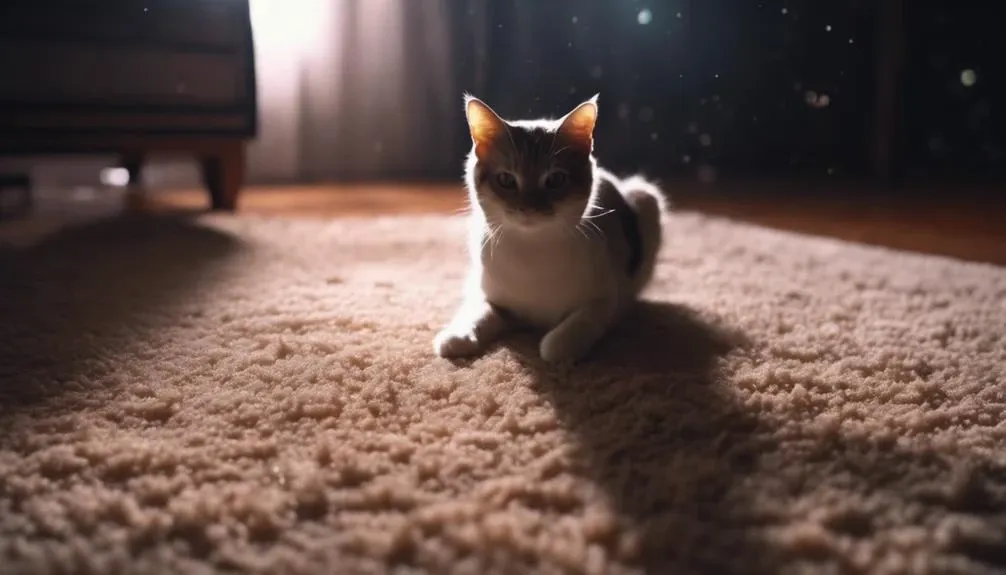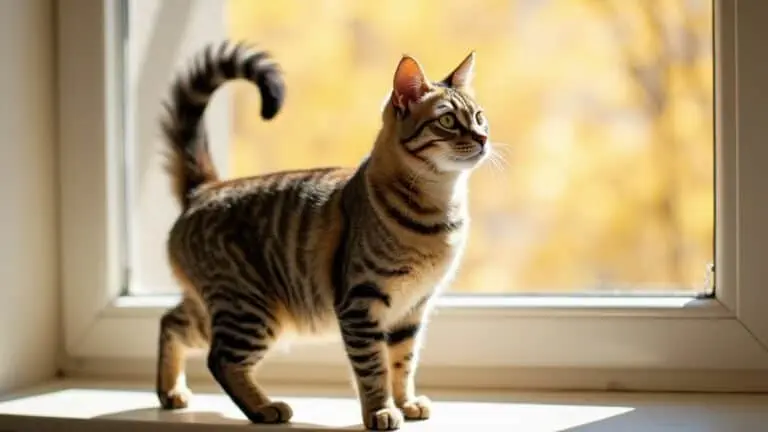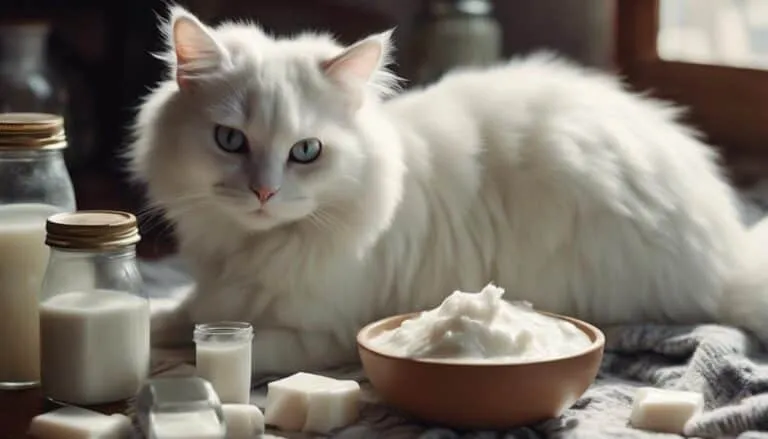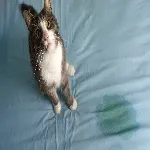The Best Fluffy Pancakes recipe you will fall in love with. Full of tips and tricks to help you make the best pancakes.

When it comes to uncovering hidden cat urine, a UV light can be your investigative tool. Imagine the satisfaction of finally knowing where those mysterious odors are coming from in your home.
But the process doesn't stop there; in fact, it's just the beginning. By mastering these seven straightforward steps, you'll not only detect the elusive stains but also gain valuable insights into preventing future accidents.
Stay tuned to discover the secrets behind effectively using UV light to maintain a fresh and clean living space for you and your feline companion.
Key Takeaways
- Use UV lights between 365-385 nm for optimal detection accuracy.
- Prepare the room by eliminating light sources and adjusting UV light angle.
- Identify cat urine stains by their glowing yellow or green appearance.
- Regular detection and cleaning prevent health hazards and maintain a clean environment.
Choosing the Right UV Light
To effectively detect cat urine stains, you need to choose the right UV light that emits wavelengths between 365-385 nm. When selecting a UV light for stain detection, consider handheld LED lights with 9-12 bulbs or fluorescent bulbs within this specific range. The nanometers of the UV light spectrum play a crucial role in ensuring you have the appropriate tool for the job. By opting for a UV light that falls between 365-385 nm, you increase your chances of spotting hidden cat urine stains effectively.
When you head to purchase a UV light, remember that these specialized lights can be found online or at your local home improvement stores. It's essential to understand that not all UV lights are created equal, and choosing one tailored for cat urine detection will make your task much easier. By investing in the right UV light, you're taking a proactive step towards maintaining a clean and odor-free environment in your home.
Preparing the Room
When preparing the room to detect cat urine stains using a UV light, ensure all sources of light are turned off to create complete darkness for optimal visibility. Darkening the room helps enhance the glow of cat urine spots, making them easier to detect with the UV light. Properly preparing the room by eliminating sources of light interference is crucial for accurate identification of urine stains.
Here are three essential tips to prepare the room effectively:
- Turn off all lights in the room and adjacent areas to create a dark environment that highlights the fluorescent properties of cat urine when using the UV light.
- Remove any natural light sources and cover windows to prevent external light from interfering with the detection process.
- Adjust the distance and angle of the UV light to illuminate suspected areas effectively, maximizing the visibility of any cat urine stains.
Turning Off the Lights
For optimal visibility when using a UV light to detect cat urine stains, ensure all sources of light are turned off in the room. Darkening the room by switching off lights is crucial for spotting cat urine effectively.
By eliminating ambient light, you enhance the ability to see glowing neon green or yellow urine stains under the UV light. Turning off adjacent lights in surrounding areas is essential as it improves the contrast, making it easier to identify hidden spots.
In a completely dark room, the UV light can reveal even the most hidden cat urine stains. Ensuring all lights are off creates the ideal conditions for accurately identifying and marking the affected areas for proper cleaning.
Using the UV Light
Using a UV light to detect cat urine stains requires the right equipment and proper technique for effective results. Here's how to effectively use a UV light:
- Choose the Right UV Light: Opt for UV lights between 365-385 nm as they're ideal for detecting pet urine stains. Handheld LED lights with 9-12 bulbs or fluorescent bulbs in the same range work well.
- Utilize Proper Wavelength: Understanding that nanometers measure the wavelength of UV light is crucial for successful detection. This knowledge assists in finding hidden urine stains effectively.
- Systematic Search in Darkened Room: Darken the room and use the UV light systematically to find glowing urine spots. Move the light slowly across the area, focusing on spots where your cat may have had accidents.
Identifying Urine Stains
When identifying urine stains with a UV light, it's crucial to recognize the different types of stains. They may appear as yellow spots or neon green under the light. Make sure to thoroughly search various locations near potential spots where cat urine may be present.
Additionally, pay attention to distinguishing fresh stains from older ones to determine the extent of cleaning required.
Types of Urine Stains
Identify various types of urine stains by their distinct fluorescence when viewed under UV light. When detecting urine stains with UV light, understanding the different types can help you effectively clean and eliminate odors. Here are some key points to consider:
- Fresh urine stains tend to glow brighter under UV light compared to older stains.
- Cat urine stains typically appear yellow or neon green under UV light due to specific proteins present in their urine.
- Human urine stains may exhibit a different color hue under UV light, aiding in differentiation from pet urine stains.
Location of Stains
To effectively locate cat urine stains, utilize a UV black light to reveal the distinctive yellow or neon green glow they emit. Sweep the UV light systematically across surfaces to find hidden stains, starting near the suspected area and working outward for thorough detection.
Look for glowing spots on walls, furniture, bedding, and other surfaces using the UV light. By moving the UV black light methodically, you can pinpoint the exact locations of the stains, ensuring a more effective cleanup process. This technique helps you identify even the faintest traces of cat urine, allowing you to address the issue promptly.
With the UV black light in hand, detecting and locating these stains becomes a simpler task, aiding in maintaining a clean and odor-free environment.
Recognizing Old Stains
As you scan your surroundings with a UV black light, the telltale glow of old cat urine stains may surprise you with their visibility under this specialized illumination. Here's how you can effectively recognize and address these stains:
- UV Lights: Use a UV black light in the 365-385 nm range to reveal hidden urine stains.
- Find the Stain: Look for yellow or neon green spots that indicate old urine stains under the UV light.
- Clean the Stain: Once identified, clean the stain thoroughly to prevent re-marking and ensure complete odor removal.
Cleaning the Area
For effective removal of cat urine stains, thoroughly soak the affected area with a heavy-duty pet odor removal cleaner. This step is crucial in ensuring that the odor-causing components are properly addressed.
Start cleaning from the edges of the stain and work towards the center. This method helps prevent spreading the urine further and ensures more effective removal.
Don't hesitate to repeat the cleaning process if necessary, especially for long-standing urine stains that may require multiple treatments.
After cleaning, recheck the area with the black light to ensure all spots are properly cleaned and treated. It's essential to prevent pets from re-entering the contaminated area until it's completely cleaned to avoid re-marking.
Preventing Future Accidents
Establishing a consistent feeding and bathroom schedule for your cat can help prevent future accidents. By doing so, you create a routine that your cat can rely on, reducing the likelihood of accidents occurring.
Providing multiple litter boxes in different areas of the house for easy access is another effective way to prevent accidents. This makes it more convenient for your cat to find a suitable spot when nature calls, decreasing the chances of accidents happening elsewhere.
Using enzymatic cleaners to remove lingering pet odors not only helps maintain a clean environment but also discourages re-marking. These cleaners break down the urine molecules, eliminating the scent that may attract your cat to the same spot.
Frequently Asked Questions
How Do You Check Cat Urine With UV Light?
To check for cat urine with UV light, sweep it over surfaces methodically. Glow-in-the-dark yellow or neon green spots reveal hidden stains. Darken the room for better visibility. UV light is effective in spotting, cleaning, and removing odors on various surfaces.
Why Is My Cat's Urine Not Showing Under Black Light?
Your cat's urine may not show under black light due to lighting conditions, urine concentration, surface type, or cleaning products used. Consider factors like age of the urine, surface absorbency, and fluorescence loss.
Will Cat Urine Glow if Lit With a Black Light?
Yes, cat urine will glow under a black light due to phosphorus. Identifying stains, finding hidden spots, and preventing future accidents are easier with UV light. This method aids in effective odor removal and thorough cleaning.
Will Urine Still Show Under Black Light After Cleaning?
After cleaning, traces of urine may still show under UV light, indicating incomplete cleaning. Verify cleaning effectiveness by using UV light to detect hidden residue. Lingering odors can be identified with a post-cleaning UV inspection.
Conclusion
Now that you've learned how to detect cat urine with UV light in 7 easy steps, you can effectively locate and eliminate those stubborn stains.
By following these simple techniques and using the right tools, you can keep your home clean and odor-free for you and your furry friend.
Remember to act promptly, clean thoroughly, and take preventive measures to ensure a fresh and welcoming living space.
Your pet and your nose will thank you!








